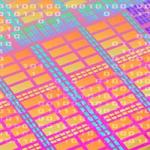
Robert B. Best, Ph.D.
Senior Investigator
Computational Biophysics Section, Laboratory of Chemical Physics
NIDDK
Research Topics
The broad goal of my work is the development of novel simulation methodology and theory for better understanding protein function and evolution. Specifically, we are interested in following interrelated topics: the molecular mechanisms of protein folding, protein misfolding and protein aggregation, and in the properties and function of intrinsically disordered proteins. We are also interested in the evolution of sequences which fold to stable structures. Our aim is to help to interpret experiments and to answer questions which would be very difficult to directly address experimentally.
Recent work has focused on the following:- design of protein sequences using evolutionary information
- co-translational protein folding
- the optimization of protein force fields using empirical data for peptides and macromolecules in solution;
- interpretation of single-molecule fluorescence or and small-angle X-ray scattering experiments using simulation and theory;
- coarse-grained master equations as a tool for interpreting peptide dynamics in simulations;
- diffusion models of protein folding;
- development of coarse-grained models for protein association and phase separation
- methods for identifying cryptic binding pockets in proteins.
To view more about my research, visit my lab's website.
Biography
- United Kingdom Royal Society University Research Fellow, University of Cambridge, 2007–2012
- Ph.D., University of Cambridge, 2003
- M.Sc. University of Cape Town, 2000
Selected Publications
- Tian P, Louis JM, Baber JL, Aniana A, Best RB. Co-Evolutionary Fitness Landscapes for Sequence Design. Angew Chem Int Ed Engl. 2018;57(20):5674-5678.
- Galvanetto N, Ivanović MT, Chowdhury A, Sottini A, Nüesch MF, Nettels D, Best RB, Schuler B. Extreme dynamics in a biomolecular condensate. Nature. 2023;619(7971):876-883.
- Dannenhoffer-Lafage T, Best RB. A Data-Driven Hydrophobicity Scale for Predicting Liquid-Liquid Phase Separation of Proteins. J Phys Chem B. 2021;125(16):4046-4056.
- Tian P, Steward A, Kudva R, Su T, Shilling PJ, Nickson AA, Hollins JJ, Beckmann R, von Heijne G, Clarke J, Best RB. Folding pathway of an Ig domain is conserved on and off the ribosome. Proc Natl Acad Sci U S A. 2018;115(48):E11284-E11293.
- Holmstrom ED, Liu Z, Nettels D, Best RB, Schuler B. Disordered RNA chaperones can enhance nucleic acid folding via local charge screening. Nat Commun. 2019;10(1):2453.
Related Scientific Focus Areas

Biomedical Engineering and Biophysics
View additional Principal Investigators in Biomedical Engineering and Biophysics


This page was last updated on Wednesday, January 10, 2024